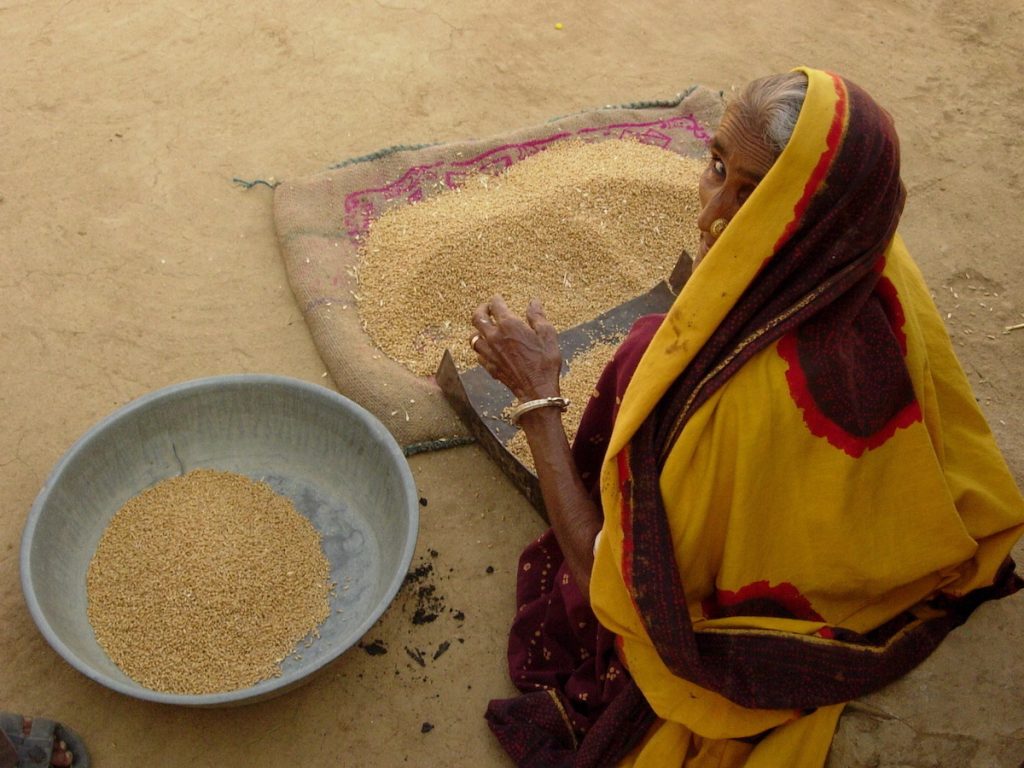Despite overflowing granaries, India continues to slip on the Global Hunger Index with a dismal ranking of 107 out of 121 countries.
For the third consecutive year, India’s ranking has seen a downslide.
In the latest 2022 Global Hunger Index (GHI), the country has slipped six positions from 2021 when it was ranked 101. In 2020, it was ranked 94.
India, Asia’s third largest economy, has fared worse than its neighbors — Pakistan ranked 99, Nepal (81), Bangladesh (84), and Sri Lanka, which faced the worst economic crisis in 70 years at 64.
The GHI, jointly published by the German-based Welthungerhilfe and Dublin-based Concern Worldwide, gave India a score of 29.1 — a hunger level falling under the “serious” category.
The index has five levels of hunger under which each country falls — low, moderate, serious, alarming and extremely alarming.
The GHI score is calculated based on four indicators including undernourishment, child wasting, child stunting and child mortality.
Based on data from 2019-2021, 16.3 percent of the population was undernourished. This translates into 224.3 million people in India being undernourished out of the total 828 million people globally, the report said.
According to the World Health Organization, “child wasting” is when a person is too thin for his or her height. India’s “child wasting” rate of 19.3 percent was the “highest” of any country in the world.
“Child wasting” — a strong predictor of mortality among children under five years of age — worsened from 15.1 per cent in 2012-2016 to 19.3 per cent in 2017-2021.
India, Pakistan, and Afghanistan each have child stunting rates between 35 and 38 percent, with Afghanistan’s rate being the highest in the region.
“Child stunting” refers to children under-five who have low height for their age.
“South Asia has the highest child stunting rate and by far the highest child wasting rate of any world region,” the report said.
There has been an improvement in child mortality or the share of children who die before their fifth birthday. Down from 4.6 per cent in 2014 to 3.3 in 2022.
However, the government has termed the GHI report as “flawed” and “a consistent effort to taint India’s image.”
“The index is an erroneous measure of hunger and suffers from serious methodological issues. Three out of the four indicators are related to the health of children and cannot be representative of the entire population,” it said in a statement.

Church action found wanting
Father George Kannanthanam, Secretary of the Catholic Health Association of India, lamented that the Church, which responded well to the hungry during peak COVID times, “has not perceived hunger as an issue of importance.”
“It has not made poverty its priority focus of intervention,” said the priest.
He said an “Indian Church Food Summit” involving Church-based social subsidiaries and committed personnel would have made a huge impact.
The priest said the Church’s more than 55,000 educational institutions, nearly 11,000 parishes and 4,000 odd health and social organizations would have come out with more organized and effective programs and projects answering to the hungry families around them.
Father Kannanthanam also said that the government cannot also be in the “denial mode” after admitting last year that about one in every four Indians, or 25 percent, was living in poverty, said
The fact is that hunger and starvation still persists. There is no need to go into the modalities used to measure hunger. “GHI is an eye opener and we need to take cognizance of the fact,” he said.
For the past few years, India has had bumper food crops. But tons of grains rot away for want of storage space. These could be easily provided to those going hungry, said the priest.
Father Kannanthanam said that the latest round of India’s National Family Health Survey released in November 2021 states that more than half of Indian children and women are anemic.
Citing another study, the priest said that food insecurity was increasing in the country.
The Hunger Watch Survey conducted between December 2021 and January 2022 shows that among 6,697 households across 14 states, 79 percent reported some form of food insecurity.
An alarmingly high 25 percent reported severe food insecurity as per the survey conducted by Right To Food Campaign India and the Centre for Equity Studies.
The survey — aimed to track and document the hunger situation among vulnerable communities through in-person surveys — found that over 60 percent of those surveyed were not having enough food or were unable to eat healthy or nutritious food.
Dalit households (29%) followed by Scheduled Tribe (27%) reported experiencing highest levels of severe food insecurity. Up to 84% Dalit households and 81% general caste households reported experiencing any kind of food insecurity.
Muslim households reported higher food insecurity of up to 87% claiming to be in precarious conditions compared to 77% Hindu households.
However, Christian households (37%) were the ones that reported the highest levels of severe food insecurity followed by Muslim (35%) and Hindu (23%) households.